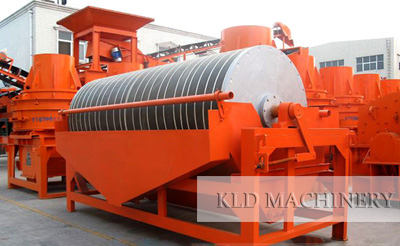Introduction:Types of magnetic separation process There are three basic types of magnetic separation process: magnetic fields, impact grinding, sieving. Magnetic separation is a very popular and low-cost method of separating iron and magnetic materials
Types of magnetic separation process
There are three basic types of magnetic separation process: magnetic fields, impact grinding, sieving. Magnetic separation is a very popular and low-cost method of separating iron and magnetic materials. Magnetic separation which is an industrial process mainly uses a magnetic field to operate. In addition to three methods, many other types of separators exist. Magnetic separation is used primarily by mining industries but also by environmentalists on industrial wastes and even by those who study space materials. Magnetic separators can be used either "wet" or "dry" and come in countless shapes and sizes.
When any mineral is exposed to a magnetic field, it is either drawn by the field or not. Particles that are drawn to the field are called magnetic. There are different sorts of magnetic separators, but the most common is the drum. Essentially a stream of material is dropped onto the outside of a magnetic drum. Non-magnetic or weakly magnetic particles bounce or fall off of the drum. The remaining magnetic particles stick to it until they are scraped off.
Sometimes, after passing around the first drum, the remaining material hits what is called an impact grinder or impact mill. The impact grinder contains a rapidly spinning wheel that increases the speed of the falling material. The particles then strike what is called an impact block, shattering into even smaller bits. Some mining companies order custom-made grinders that reach several stories high. The smashing of the non-metallic leftovers often reveals particles that are metallic but were covered in non-metallic matter and did not stick to the drum originally.
The pieces, which can be as small as half an inch around, then fall onto a screen. The tiniest bits, which are most likely sand particles, are sieved through the screen. These bits of worthless rock and other silicates are called gangue. The gangue is generally discarded. After this screening process, the remaining material is then further dropped onto a second magnetic drum where the process repeats.What material remains will be metal concentrate.


